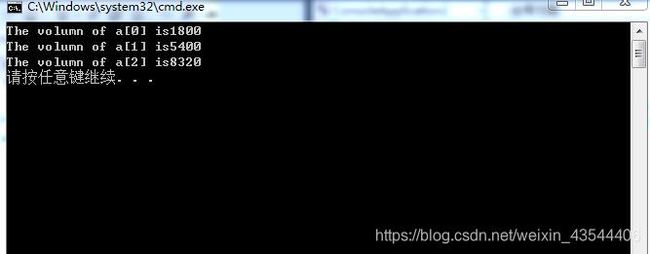C++使用类和对象(谭浩强9.1-9.7)
例9.1 在例8.3的基础上,用构造函数为对象的数据成员赋初值
#include 程序执行结果如图:

例9.2 带参数的构造函数,并在类外定义构造函数
#include 程序执行结果如图:

例9.3定义多个构造函数的构造函数重载用法:
#include 程序执行效果如图例9.2
例9.4 包含默认参数的构造函数:
#include 程序执行结果如图:

例9.5 包含构造函数和析构函数的C++程序
#include 执行结果如下图:

例9.6 用数组对象的方法,输出三个立方体的体积
#include #include 
